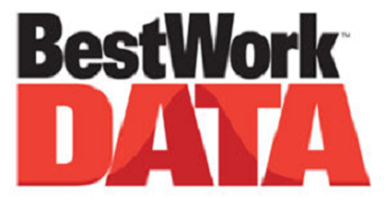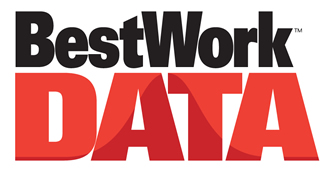Without Behavioral DATA, You’re Guessing

By: Chuck Russell, Chairman & Chief Knowledge Officer, BestWork DATA
What is Behavioral DATA?
Behavioral DATA is the measurement of the cognitive abilities and hard-wired behavioral traits that are the foundation of how people think, learn and behave. It determines how people learn and how managers manage. It is foundational to communication and teamwork. It can show the most promising career paths and warn about misfits along the way. Without it, talent acquisition is perilous and succession planning iffy. MRI’s gave doctors extraordinary information about soft tissue, beyond anything X-rays could do. It transformed medical diagnostics and surgery. Behavioral DATA offers a similar transformation to the world of business and education.
These cognitive abilities and behavioral traits have always been there. Early personality models such as DISC and Myers-Briggs introduced the idea of personality types but it was not until the early 90’s that a clear structure of personality traits was defined and accepted as the Big Five. These five major traits presented the model, but it was the separate facets that made up each of the Big Five that offered an understanding of behavior that could be applied to any situation. Even though the model was accepted, applying it required special training or expert assistance to interpret the results of fairly long and complicated assessments. The traits were there, but for the vast majority of the world, they were not visible. Similarly, soft tissue was always there, but doctors had no way to see it clearly until MRI’s were developed.
What Changed?
BestWork DATA was the outcome of an improbable series of events, providing a laboratory of experience with hundreds of businesses and thousands of participants, engaging several of the top psychometric experts in the world, intersecting with a resourceful and creative entrepreneur whose own consulting and training experience was the practical inspiration for a completely new way of seeing human potential. The IT platform to realize the concept was developed by two brilliant software architects who looked well beyond conventional approaches.
BestWork DATA revolutionized the understanding of human behavior in three ways:
- First, an advanced psychometric instrument was created that simplified the time required while collecting remarkably robust and re- liable DATA.
- Second, the DATA was made agile, meaning that each separate DATA element can be applied to any question involving human behavior.
- Third, and most importantly, they designed hundreds of reports that could be understood by anyone, without the need for special training or expert interpretation.
Why Is That Important ?
Note: In this paper, DATA refers to the hard-wired personality traits and cognitive abilities that each person has. It is behavioral data.
Some DATA realities:
- 50% of the people cannot sell persuasively.
- 50% of the people cannot manage or supervise others.
- 50% of the people cannot work remotely.
- 50% of the students cannot be successful with online education.
- 60% of the students cannot succeed in a STEM career.
- In a normal classroom, without DATA, the teacher cannot reach a third or more of the students.
- Advertising messages can only communicate effectively with a small percentage of the viewers.
- 60% of the people will not consistently follow safety rules.
- 50% of the people cannot pay attention to details.
With DATA, there is the potential to transform education, advertising, business operations, workforce management and much more.
What BestWork measures:
- General Reasoning or fluid intelligence is the cognitive ability used in virtually every part of life. It is how fast a person learns. It is how fast a person processes information. Neither fast or slow is better. It depends on the situation. Not knowing this is the principle cause of miscommunication among people.
- Assertiveness is the ability to speak directly and to handle confrontations. It is also the basis of being able to make decisions and manage others. Basically, half the people in the world want to do a good job if someone will tell them what to do. The other half also want to do a good job if people will just do what they tell them to do. Non-assertive people represent amazing poten- tial that is often untapped because they do not speak up.
- One third of the population wakes up happy to continue doing what they have always been doing. They do not like change, and this brings stability to their world. One third of the people wake up looking for change and variety in their world. The middle group is balanced between the two extremes.
- One third of the world wants to have a firm schedule for every day with a clear and detailed plan of what they are doing. They work accurately with detailed information, and they pay attention to the details around them. One third of the people prefer to react to what is happening, feeling that plans are always changing. They see the big picture but not the details.
- One third of the world is emotionally sensitive, feeling not only their own emotions but those of others. This sensitivity makes them more sensitive to stress, and there is an urgency in what they do. At the opposite end of the normal bell curve, one third of the world is relaxed and patient, not being bothered by stress and showing little urgency. They are also not sensitive to the emotions of others and show little emotion themselves.
- Some people get energy from interacting with other people. Others must spend energy when interacting. One third are enthusiastic story tellers, always looking for an audience. One third are quiet listeners, saying little.
- Everyone can participate on a team but there are different goals. One fourth of the people want to be the stars on the team. They need recognition for what they do. At the other end of the bell curve, people want to be on the team and contribute to its success, but they do not need or want recognition for that. In the middle are the win-win people, who are a little of both. The individually competitive ones respond to competition and incentives, but that same thing demotivates the pure team players.
Data on the specific capabilities of baseball players has transformed the game of baseball, enabling extraordinary performance. DATA brings those same transformative possibilities to business, education and individual lives. With DATA, bad hires become optional; managers see employees perform at higher levels; communication glitches go away; teams are engineered to be more effective; and productivity increases along with profitability. Better information makes everything better.
Today HRBOOST® is the ONLY Certified Partner in Chicago for BestWork DATA and with over 88000 Assessments in the market, we are bias toward cognitive Assessments when aligning talent to JOY and PURPOSE through their gifts and in a market where many must hire those with little to no experience. Let HRBOOST® present a clear picture of your team’s strengths and abilities! Give us a call at (847) 736-5085
About the author: Chuck Russell is a thought leader on applying behavioral data to business, educational and social challenges. For over 25 years, he has worked with companies of all kinds to optimize their talent acquisition and talent management practices with behavioral data. He has used that experience to design hundreds of applications enabling anyone to use information that previously required expert interpretation or specialized training. He is an international speaker on behavioral data analytics. His most recent book is No Bad Hires, Bad Hires Are Now Optional.

